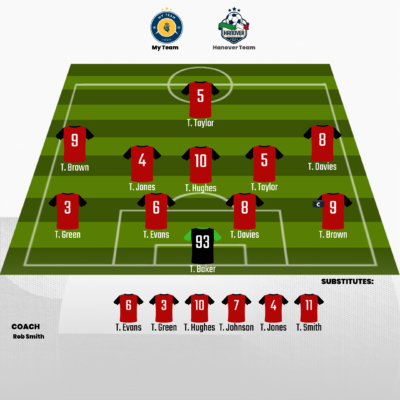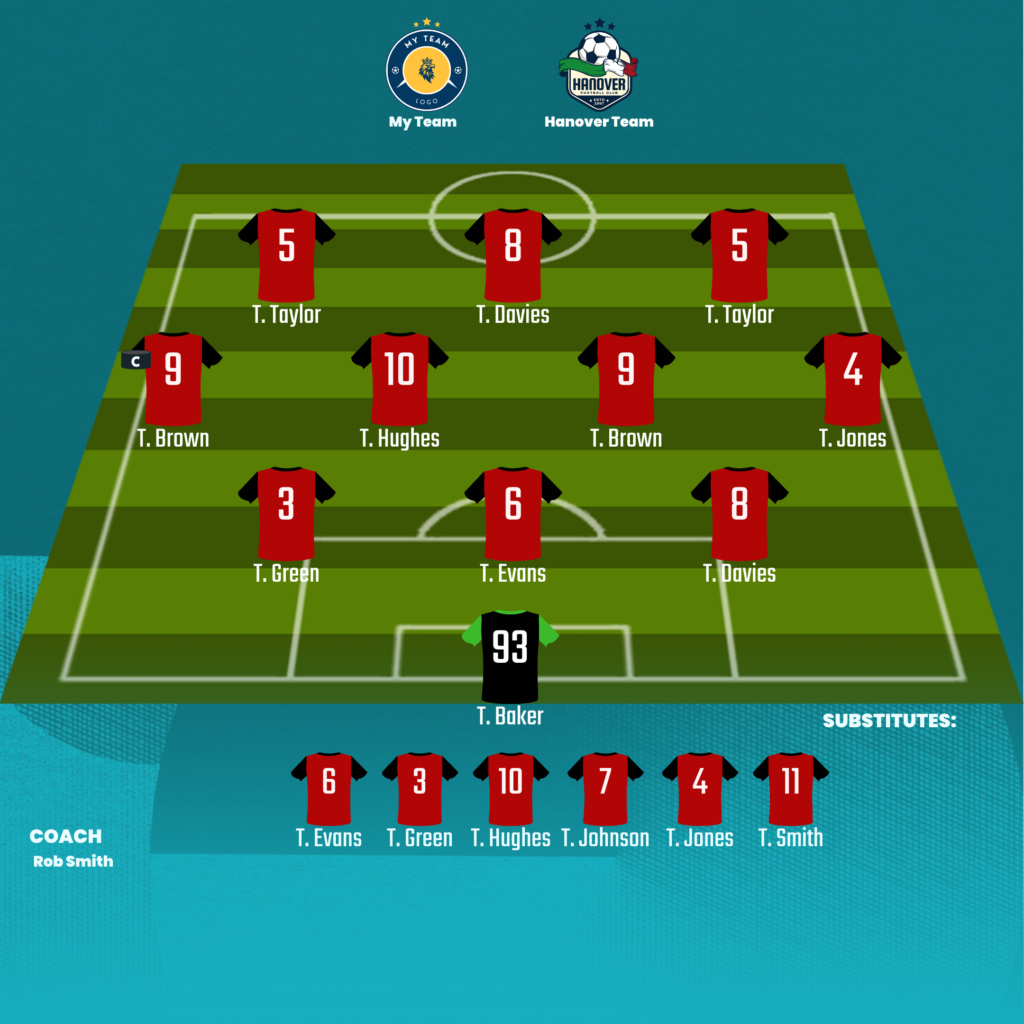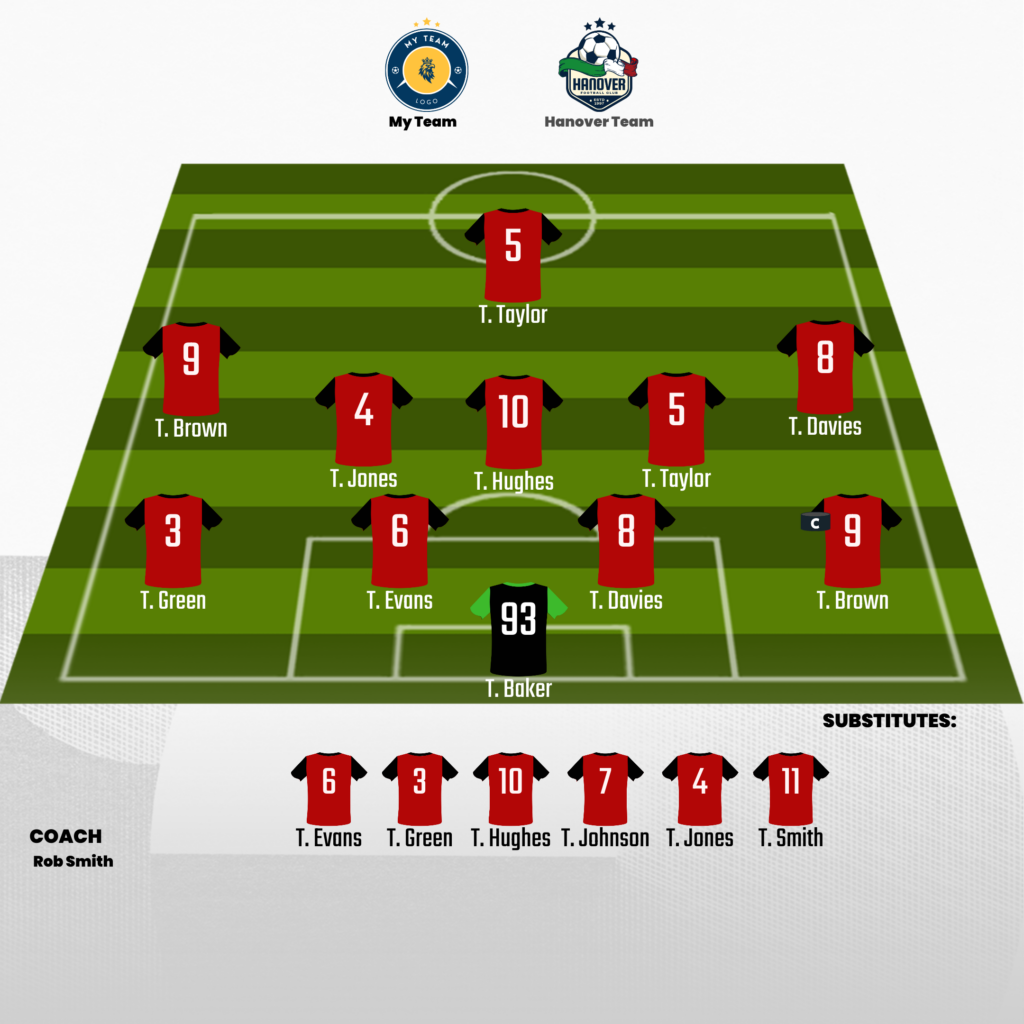Defensive football lineup is crucial for winning football matches by shutting down even the most aggressive attacking teams. Whether you’re coaching a youth team, managing a fantasy football squad, or simply a football enthusiast, understanding how to build a strong defensive lineup is essential.
In this guide, we’ll break down the most popular defensive football formations, explain player roles, and show you how to build the perfect defensive lineup for different situations.
1. The 4-4-2 Defensive Football Lineup – The Classic Setup
The 4-4-2 formation is one of the most common defensive football lineups, offering a balance between defense and attack.
Formation Breakdown:
- 4 Defenders – 2 Center Backs (CB), 2 Full Backs (FB)
- 4 Midfielders – 2 Central Midfielders (CM), 2 Wide Midfielders (WM)
- 2 Forwards – Strikers (ST) or Forward (FW)
Player Roles:
- Center Backs (CB): Anchor the defense and stop opposing forwards.
- Full Backs (FB): Defend against wingers and support the attack on the flanks.
- Central Midfielders (CM): Control the midfield and provide defensive cover.
- Wide Midfielders (WM): Track back to support full backs and contribute to attacks.
- Strikers (ST): Stay ready for counterattacks but also press defenders.
Best For:
- Teams looking for balanced defense and attack.
- Countering standard offensive formations.
2. The 5-3-2 Formation – Defensive Solidity
The 5-3-2 formation is a defensive-minded setup that focuses on stopping attacks and controlling the center of the pitch.
Formation Breakdown:
- 5 Defenders – 3 Center Backs (CB), 2 Wing Backs (WB)
- 3 Midfielders – Defensive Midfielder (CDM), 2 Central Midfielders (CM)
- 2 Forwards
Player Roles:
- Center Backs (CB): Form a solid defensive block.
- Wing Backs (WB): Provide width and support both defense and attack.
- Defensive Midfielder (CDM): Screens the defense and breaks up attacks.
- Central Midfielders (CM): Transition the ball between defense and attack.
Best For:
- Teams looking to absorb pressure and counterattack.
- Facing strong attacking opponents.
3. The 4-5-1 Formation – Extra Midfield Control
The 4-5-1 formation adds strength to the midfield to control possession and limit attacking opportunities.
Formation Breakdown:
- 4 Defenders
- 5 Midfielders – 3 Central Midfielders (CM), 2 Wide Midfielders (WM)
- 1 Forward
Player Roles:
- Central Midfielders: Dominate possession and block passing lanes.
- Wide Midfielders: Defend the flanks and support the lone striker.
- Forward: Acts as the target for long balls and counters.
Best For:
- Controlling the midfield against attacking teams.
- Slowing down the tempo of the game.
4. The 3-4-3 Formation – Defensive Football Lineup with Offensive Options
The 3-4-3 formation focuses on defensive stability while maintaining offensive width and pressing options.
Formation Breakdown:
- 3 Defenders
- 4 Midfielders
- 3 Forwards
Player Roles:
- Defenders: Solidify the backline while wing backs push forward.
- Midfielders: Provide width and control the center.
- Forwards: Press high and exploit counterattacks.
Best For:
- Balanced defensive and offensive teams.
- Pressing high and recovering possession quickly.
5. The 4-2-3-1 Formation – Defensive Midfield Shield
The 4-2-3-1 formation is a highly flexible setup that focuses on defensive midfielders providing extra cover.
Formation Breakdown:
- 4 Defenders
- 2 Defensive Midfielders (CDM)
- 3 Attacking Midfielders (CAM/WM)
- 1 Striker
Player Roles:
- Defensive Midfielders: Screen the backline and intercept attacks.
- Attacking Midfielders: Transition from defense to attack quickly.
- Striker: Leads the attack and finishes chances.
Best For:
- Controlling the game with defensive strength.
- Countering aggressive attacking teams.
How to Choose the Right Defensive Football Lineup
- Against Attacking Teams: Use 5-3-2 or 4-5-1.
- Against Possession Teams: 4-2-3-1 offers balance.
- For Flexibility: 3-4-3 adapts well to defensive and attacking phases.
Conclusion
Mastering defensive football lineups and formations is key to controlling games and neutralizing threats. By understanding the strengths and weaknesses of each formation, you can adjust your defensive strategy to match any opponent. Whether you’re creating lineups for real matches or fantasy football, the right formation can be the difference between victory and defeat.
All of the mentioned lineups can be generated in our lineup builder.


